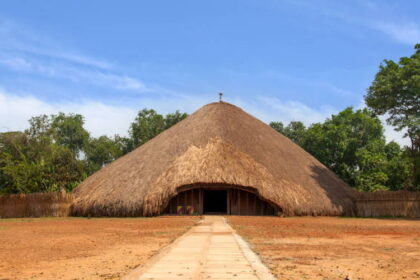The northern Indian state of Uttarakhand, often reverently called ‘Devbhoomi’ or the ‘Land of Gods,’ stands as a spectacular testament to the grandeur of the Himalayas. Carved out of Uttar Pradesh in 2000, this region has rapidly cemented its identity as a unique spiritual and ecological haven. Its terrain is a mesmerizing mosaic of towering snow-clad peaks, deep gorges, ancient forests, and the crystalline headwaters of some of India’s holiest rivers. The very name, Uttarakhand, evoking the northern quarter, suggests its geographic and spiritual eminence.
Geographically, the state is a marvel, segmented into the two culturally distinct divisions of Garhwal and Kumaon. The state capital, Dehradun, sits nestled in the Dun Valley, while Gairsain is the designated winter capital, reflecting the administrative challenge of governing a diverse, mountainous region. The immense Greater Himalayan range forms its northern rampart, holding the sacred glaciers like Gangotri and Yamunotri, which feed the Ganga and Yamuna rivers—lifelines to the vast Indian plains. Lower down, the Lesser Himalayas host famous hill stations like Mussoorie and Nainital, while the Shiwalik foothills provide a transition to the northern plains. This unique topography creates a climate that ranges from subtropical in the valleys to perpetually frozen at the highest altitudes, supporting a rich tapestry of biodiversity. The substantial forest cover, comprising approximately 45% of the state’s geographical area, is not merely a scenic feature but a critical regulator of the regional ecology.
The culture of Uttarakhand is deeply intertwined with its mountainous landscape and ancient history. Legend traces human habitation in the region back to prehistoric times, with ties to the epics of the Ramayana and Mahabharata. Archaeological evidence, such as the rock shelters at Lakhudyar, confirms a continuous human presence. The traditions of the Garhwali and Kumaoni people are characterized by their fortitude, vibrant folk music and dances like the Thali, Jadda, and Chauphula, and a deep, traditional respect for the natural environment.
Perhaps the most globally recognized cultural contribution of Uttarakhand is the Chipko movement. Originating in the 1970s, this grassroots, non-violent resistance, primarily by village women, against state-backed commercial logging, became a global template for ecological activism. The act of ‘hugging’ the trees to protect them articulated a profound message: for the local communities, forests are not just timber but the source of water, soil, and livelihood. This commitment to conservation remains a defining trait of the people of Uttarakhand.
The economic narrative of Uttarakhand is overwhelmingly dominated by the service sector, with tourism being the most significant contributor. The state’s religious appeal, anchored by the Char Dham Yatra, has driven phenomenal growth. Recent official data highlights this boom, with over 23 crore tourists visiting the state in the last three years, directly benefiting local businesses, including homestay operators, hotels, dhabas, and women’s self-help groups. The government’s efforts to expand infrastructure, improve connectivity, and promote year-round pilgrimage have transformed tourism into the foundational pillar of the state’s economy.
Beyond pilgrimage, Uttarakhand is fast becoming an international hub for adventure and wellness tourism. The thrill of white-water rafting, bungee jumping, and trekking on ancient Himalayan trails attracts adrenaline junkies from around the world. Destinations like Rishikesh and Haridwar are globally recognized for yoga and spiritual retreats, capitalizing on the region’s serene atmosphere. The promotion of adventure and wellness tourism provides a crucial strategy for year-round economic activity, moving beyond the traditional pilgrimage season.
The state has also strategically developed its industrial base, primarily in the southern foothills. The State Industrial Corporation of Uttarakhand Limited (SIDCUL) has played a key role in setting up industrial estates, attracting significant investment in sectors like pharmaceuticals, automobiles, and food processing. This diversification is vital for creating non-agricultural employment opportunities and improving the Gross State Domestic Product (GSDP). The proximity of the state to the National Capital Region (NCR) of Delhi further enhances its appeal as an investment destination.
However, the path to sustainable development in Uttarakhand is fraught with unique challenges inherent to a young, mountainous state. The Himalayas are a geologically young and highly sensitive mountain range, making the region acutely vulnerable to natural disasters. Experts consistently point to the need for region-specific environmental policies to address the consequences of climate change, such as increased rainfall intensity, prolonged dry spells, and glacial retreat. Unplanned and rapid urban growth, coupled with large-scale infrastructure projects, has often been linked to ecological instability and a higher risk of landslides and flash floods. The state government must prioritize climate resilience, disaster preparedness, and sustainable urban planning to protect both the ecosystems and the communities living in these fragile areas.
The conservation efforts in Uttarakhand are focused on protecting its immense biological wealth. The state is home to iconic national parks, including Jim Corbett and the Valley of Flowers. Its high-altitude ecosystems harbor species of great ecological importance. One such creature, a symbol of the state’s vibrant natural heritage, is the Himalayan Monal. This spectacular bird, known for its dazzling, multi-colored male plumage, is the State Bird Of Uttarakhand. The Monal’s presence in the upper temperate and sub-alpine zones underscores the need for strict anti-poaching and habitat conservation measures.
In conclusion, Uttarakhand is a land of profound contrasts and extraordinary potential. Its identity is inextricably linked to the mighty Himalayas—a source of spirituality, economic opportunity, and environmental vulnerability. The collective commitment of its people, echoing the spirit of the Chipko movement, towards preserving the ecological integrity of the ‘Land of Gods’ will be the determining factor for its future prosperity. By harmonizing development with environmental sustainability, Uttarakhand can continue to thrive as a beacon of natural beauty and spiritual solace for the world.




